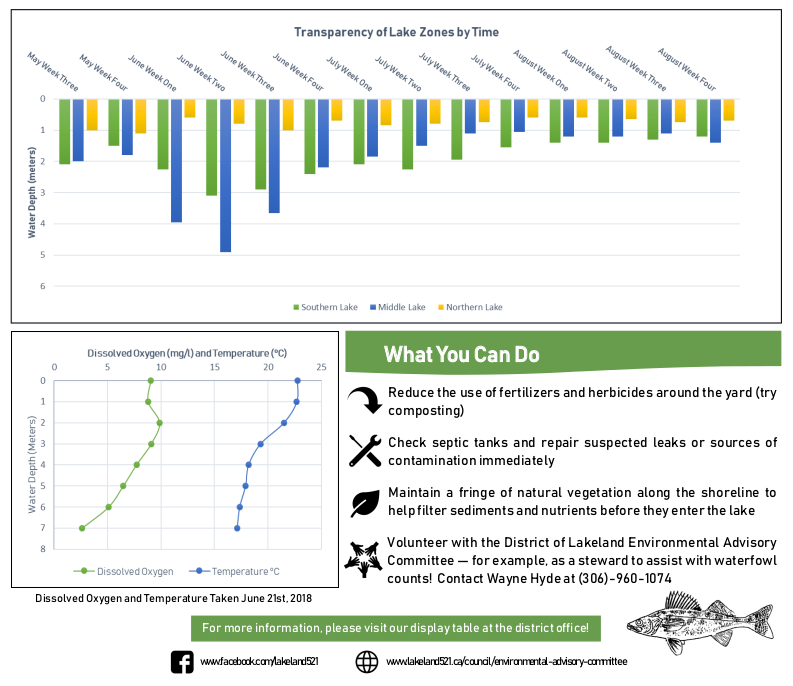
Nutrient loads, as evidenced by excess plankton growth, have become increasingly evident at Emma Lake over the past several summers.
Increased nutrients are tied to a variety of sources including: lawn and garden fertilizers; septic tank seepage; and increased storm water and inorganic nutrient runoff. These added nutrients stimulate the growth of algae and reduce water clarity. When algae dies, it settles to the bottom and decomposes. This decomposition, in turn, consumes oxygen which is detrimental to fish and the birds and mammals (including humans) that feed upon them.
In 2018, the District of Lakeland through the Environmental Advisory Committee initiated a research program with the Natural Resources Program at Saskatchewan Polytechnic to look at this issue. The study looked at two key factors in 2018 and will continue to gather data in 2019 :
1. Water transparency—a measure of how deep light can penetrate water. This measure is negatively affected by the amount of algae and particulates suspended in the water.
2. Basic attributes of water quality such as water temperature and dissolved oxygen.
Figure 1 below shows the water transparency results of the 2018 survey. Maximum transparency was measured in the 2nd week of June, minimum transparency was in August, and the south and middle lakes were more transparent than the north lake. Figure 2 displays a pattern of diminishing oxygen and water temperature with depth. This pattern is normal in the summer but difficulties arise when oxygen drops below 3 mg/L as might occasionally happen after an algal bloom.
